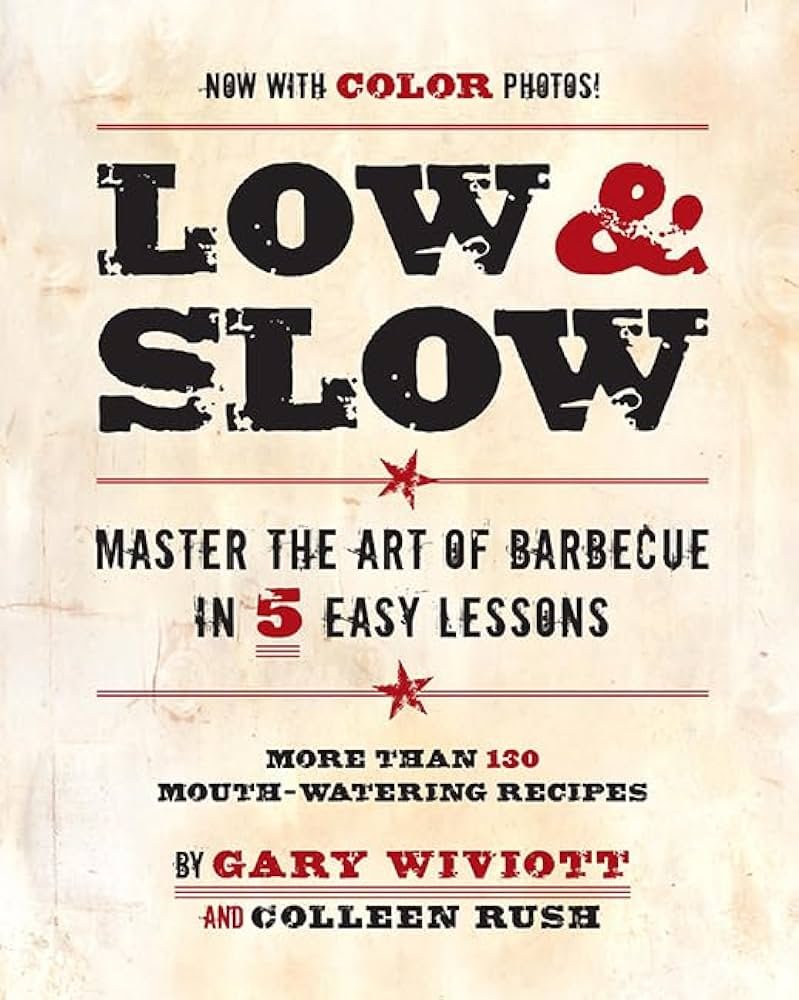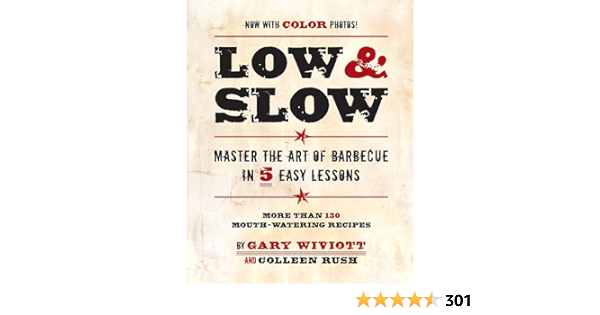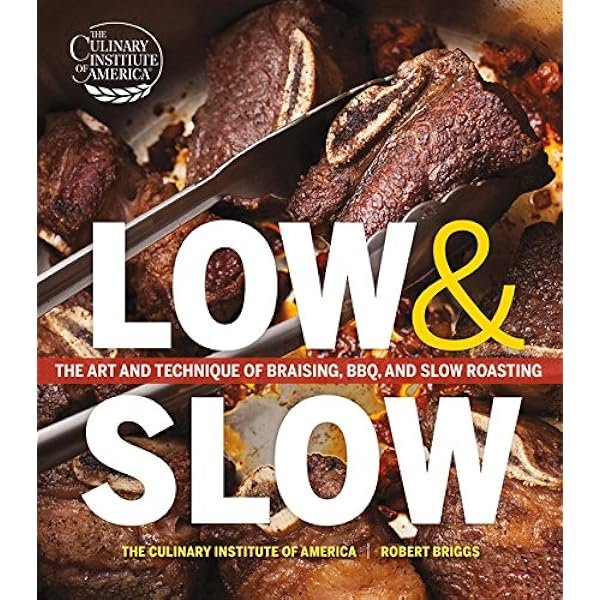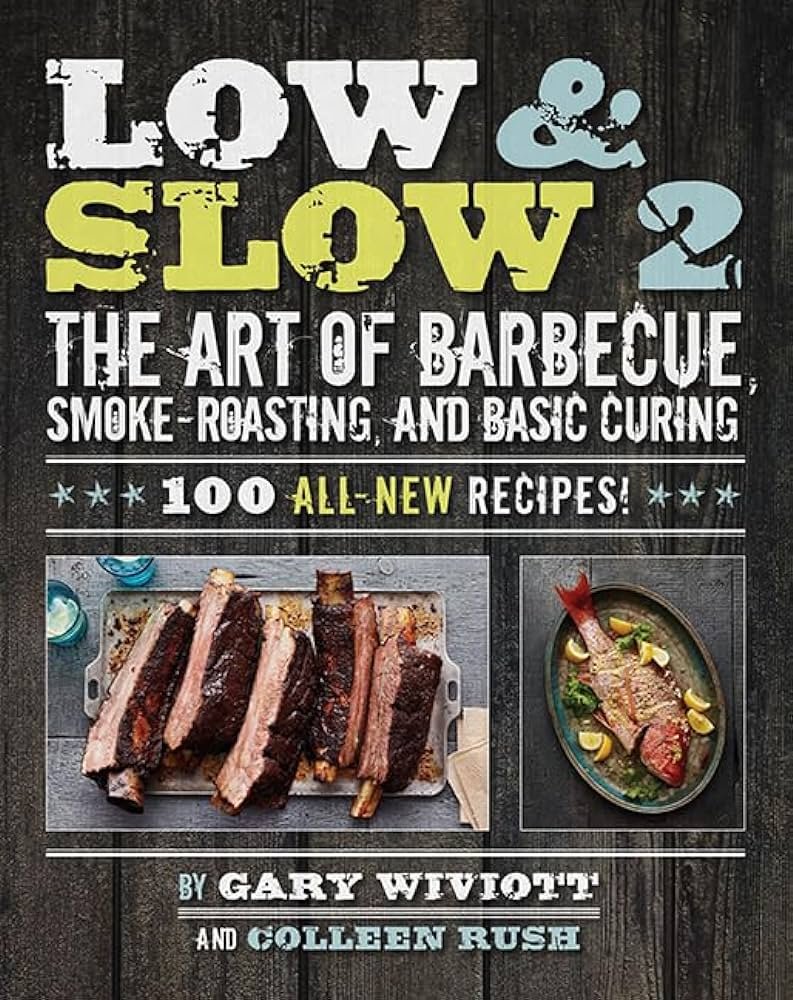Are you ready to take your BBQ skills to the next level? In this article, you will learn the secrets of mastering the art of low and slow BBQ. From tender and juicy brisket to succulent ribs, we will guide you through the techniques and tips that will elevate your BBQ game. Whether you’re a seasoned pitmaster or a beginner, get ready to unlock the secrets to creating mouthwatering BBQ that will have your friends and family begging for more. Get your apron on, fire up the smoker, and let’s dive into the world of low and slow BBQ. When it comes to barbecuing, there’s nothing quite like the succulent flavors and tender textures that come from cooking meat low and slow. Whether you’re a seasoned pitmaster or just starting out, mastering the art of low and slow BBQ is a skill that will elevate your grilling game to the next level. In this comprehensive guide, we’ll take you through the essential steps to choose the right meat, prepare it for cooking, set up your grill or smoker, master the smoke, monitor and control temperature, understand the benefits of low and slow cooking, ensure proper air circulation, emphasize the importance of resting, perfect your sauce and glaze techniques, and honor barbecue traditions. So grab your apron, fire up the grill, and let’s dive in!
Understanding Different Cuts of Meat
When it comes to low and slow BBQ, the choice of meat is crucial. Each cut brings its own unique qualities to the table. From fatty brisket and tender ribs to juicy pork shoulder and flavorful chicken, understanding the different cuts of meat is key to a successful barbecue. Familiarize yourself with the characteristics of each cut, such as tenderness, fat content, and flavor profile. This knowledge will help you select the perfect cut for your desired outcome.
Selecting High-Quality Meat
To achieve the best results in low and slow BBQ, it’s important to start off with high-quality meat. Look for meat that is fresh, well-marbled, and sourced from reputable suppliers. The quality of the meat you choose will greatly impact the final taste and texture of your barbecue. Don’t be afraid to ask your butcher for recommendations or tips on selecting the best cuts for your cooking style.
Considering Marbling and Fat Content
One of the key factors to consider when choosing meat for low and slow BBQ is marbling and fat content. Marbling refers to the streaks of fat that run through the muscle of the meat. This intramuscular fat contributes to tenderness and flavor, as it slowly renders during the cooking process. Look for cuts with a good amount of marbling, as this will help keep the meat moist and flavorful. Additionally, consider the overall fat content of the cut. While fat adds flavor, it’s important to strike a balance to avoid overly fatty or dry meat.

This image is property of Amazon.com.
Trimming Excess Fat
Before you begin cooking your meat, take a moment to trim any excess fat. While some fat is desirable for flavor and moisture, too much fat can lead to flare-ups and uneven cooking. Use a sharp knife to carefully remove any thick, hard fat that won’t render during the cooking process. Leave a thin layer of fat to enhance the flavor and juiciness of the meat. Properly trimming the fat will ensure even cooking and prevent unnecessary flare-ups.
Applying Dry Rubs
A dry rub is a mixture of spices, herbs, and seasonings that adds flavor and creates a flavorful crust on the meat. Before cooking your meat, generously apply your chosen dry rub all over the surface. Gently pat it into the meat to help it adhere and penetrate the outer layer. Let the meat sit with the dry rub for at least one hour, or even overnight in the refrigerator, to allow the flavors to infuse. This step will result in a delectable and well-seasoned barbecue.
Injecting or Brining the Meat
For an extra layer of flavor and moisture, consider injecting or brining your meat. Injecting involves using a marinade or flavorful liquid and a meat injector to inject it directly into the meat. This technique is great for larger cuts, such as brisket or whole chickens, as it ensures the flavors penetrate deeply. Brining, on the other hand, involves soaking the meat in a solution of salt, sugar, and spices to enhance tenderness and flavor. Experiment with different injection or brine recipes to find your favorite combination.

This image is property of Amazon.com.
Choosing between Charcoal, Wood, or Gas
When it comes to setting up your grill or smoker, the choice between charcoal, wood, or gas is a matter of personal preference. Each fuel source brings its own distinct flavor and cooking characteristics to the table. Charcoal provides that classic smoky flavor and allows for precise temperature control. Wood, such as hardwood chunks or chips, imparts a strong and distinct smoke flavor, adding complexity to your barbecue. Gas grills offer convenience and ease of use, but may lack some of the traditional smoky flavors. Consider your preferences and choose the fuel source that aligns with your desired outcome.
Using Indirect Heat
In low and slow BBQ, the use of indirect heat is essential. Unlike direct grilling, where the meat is placed directly over the heat source, indirect heat involves cooking the meat alongside the heat source, creating a more gentle and slow cooking environment. This ensures that the meat cooks evenly and allows the flavors to develop slowly. Set up your grill or smoker with a two-zone fire, where the heat source is on one side and the meat is placed on the other side. This indirect heat method is the foundation of low and slow BBQ.
Maintaining a Consistent Temperature
Temperature control is a crucial aspect of low and slow BBQ. Consistency is key to achieving tender and flavorful results. Invest in a reliable thermometer to monitor the temperature of your grill or smoker. Aim for a steady temperature between 225-250°F (107-121°C) for most low and slow recipes. Adjust the air vents and fuel source as needed to maintain this temperature throughout the cooking process. Remember, patience is essential when it comes to low and slow BBQ, as maintaining a consistent temperature is the secret to success.

This image is property of Amazon.com.
Selecting the Right Wood for Smoking
When it comes to smoke flavor, the choice of wood is just as important as the choice of meat. Different types of wood impart different flavors, ranging from mild and sweet to bold and robust. Common hardwoods used for smoking include hickory, oak, mesquite, apple, cherry, and pecan. Experiment with different wood combinations to find your preferred flavor profile. Keep in mind that some woods, like mesquite, can be overpowering, so use them sparingly or combine them with milder woods for a more balanced result.
Controlling Smoke Intensity
While smoke adds depth and complexity to your barbecue, it’s important to control the intensity of the smoke. Too much smoke can result in an overpowering flavor and even bitterness. To maintain a good balance, use the “thin blue smoke” as your guideline. This refers to a barely visible, wispy smoke that indicates a clean and well-controlled fire. Adjust the airflow and the amount of wood chips or chunks to achieve the desired smoke intensity. Remember, it’s all about finding that perfect balance of flavor.
Adding Flavor with Wood Chips
To enhance the smoke flavor, consider adding wood chips or chunks to your grill or smoker. Soak the wood chips in water for about 30 minutes before using them. This will help slow down the burning process and create a steady release of smoke. For longer cooking sessions, such as a brisket that takes several hours, periodically add small amounts of soaked wood chips to keep the smoke flavor consistent. Experiment with different wood varieties to find your favorite combination and take your barbecue to the next level.

This image is property of i.ebayimg.com.
Using a Thermometer
Monitoring and controlling the temperature of your meat is vital for ensuring proper cooking and preventing foodborne illnesses. Use a meat thermometer to accurately gauge the internal temperature of the meat. Insert the thermometer into the thickest part of the meat, away from any bones or fat. For most cuts, aim for an internal temperature of 195-205°F (90-96°C) for pulled pork or brisket, and 165°F (74°C) for poultry. Remember to clean the thermometer probe after each use to avoid cross-contamination.
Managing Airflow and Ventilation
Proper airflow and ventilation are essential for maintaining a consistent temperature and controlling the intensity of the smoke. Most grills and smokers have adjustable vents or dampers that allow you to regulate the airflow. Adjust the vents to achieve a “sweet spot” where the fire receives the right amount of oxygen to keep a steady burn. Too much oxygen will cause the fire to burn too hot, while too little will result in a smoldering fire. Experiment with the vent positions to find the right balance for your equipment.
Avoiding Temperature Spikes
Temperature spikes can be detrimental to the outcome of your low and slow BBQ. Rapid increases in temperature can lead to dry and overcooked meat. To avoid temperature spikes, resist the temptation to constantly check on the meat or open the grill unnecessarily. Each time you open the lid, heat escapes, and the fire is exposed to oxygen, potentially leading to temperature fluctuations. Trust the process, maintain a steady temperature, and allow the meat to cook undisturbed for the best results.

This image is property of Amazon.com.
Understanding the Benefits of Low and Slow Cooking
The low and slow cooking technique offers a range of benefits that result in exceptional barbecue. One significant advantage is the breakdown of collagen, a tough connective tissue found in meat. Collagen slowly transforms into gelatin during the cooking process, leading to tender and juicy meat. This process requires longer cooking times at lower temperatures, allowing the collagen to break down gradually and create a melt-in-your-mouth texture. Low and slow cooking also allows flavors to develop slowly, resulting in a more complex and rich taste.
Patience is Key
When it comes to low and slow BBQ, patience is truly a virtue. Slow cooking takes time, often several hours or even overnight for larger cuts. Be prepared to invest the necessary time and resist the urge to rush the process. The reward for your patience will be tender, flavorful meat that falls off the bone. Remember, good things come to those who wait, and the wait will undoubtedly be worth it when you take that first bite of perfectly cooked barbecue.
Taking Advantage of Collagen Breakdown
As mentioned earlier, the low and slow cooking technique allows for the breakdown of collagen, resulting in tender and succulent meat. It’s important to understand the role of collagen and how to maximize its benefits. For tough cuts of meat, such as brisket or ribs, consider using a two-step cooking method. Start by smoking the meat at a low temperature until it reaches the desired level of smoke flavor. Then wrap the meat tightly in foil or butcher paper and continue cooking at a slightly higher temperature to encourage collagen breakdown. This method, known as the “Texas crutch,” will help tenderize the meat while retaining moisture.
Arranging the Meat on the Grill
Proper air circulation is crucial when cooking multiple cuts of meat on the grill. Arrange the meat in a way that allows for even heat distribution and ensures that each piece receives optimal airflow. Avoid overcrowding the grill, as this can lead to hot spots and uneven cooking. Leave enough space between the pieces to allow the smoke and heat to circulate freely. Consider using a grill rack or a multi-level cooking grate to maximize the available space and achieve consistent results.
Using Water Pans or Baffle Plates
Water pans and baffle plates are useful tools for maintaining proper air circulation and moisture levels during low and slow BBQ. Water pans placed in the grill or smoker create a moist environment that helps prevent the meat from drying out. Fill the water pan with hot water and position it near the heat source for a steady release of steam. Baffle plates, on the other hand, act as a barrier between the heat source and the meat, creating indirect heat and a more gentle cooking environment. Utilizing these tools can greatly enhance the quality of your low and slow barbecue.
Avoiding Meat Crowding
Although it may be tempting to fit as much meat as possible on your grill or smoker, overcrowding can lead to uneven cooking and hinder proper airflow. Avoid overcrowding the cooking surface to ensure that each piece of meat receives adequate heat and smoke. If necessary, cook in batches or use multiple grills or smokers to accommodate a larger quantity of meat. By allowing space between the cuts, you’ll ensure that each piece cooks evenly and achieves the desired tenderness and flavor.
Allowing the Meat to Rest
Resting your meat after cooking is a crucial step that should never be overlooked. Allowing the meat to rest for a period of time before slicing or serving allows the juices to redistribute, resulting in a moister and more flavorful end product. Transfer the meat to a clean cutting board or a platter and loosely cover it with foil. Let it rest for at least 15-30 minutes, depending on the size of the cut. This period of rest will yield a barbecue that is tender, juicy, and full of flavor.
Retaining Juices and Flavors
Resting the meat after cooking not only allows the juices to redistribute, but it also helps retain moisture and flavor. During the cooking process, the heat causes the juices to move toward the center of the meat. Resting allows the juices to redistribute evenly throughout the entire cut, resulting in a more succulent and flavorful barbecue. Cutting into the meat too soon can cause the juices to escape, leaving you with a drier end product. Remember, patience pays off in the form of juicy and mouthwatering meat.
Determining Resting Time based on Cut
The resting time required for each cut of meat can vary depending on factors such as size, thickness, and cooking method. As a general rule, smaller cuts will require a shorter resting period, while larger cuts need a longer time to allow the juices to redistribute fully. For individual steaks or chops, a resting time of 5-10 minutes is usually sufficient. Larger cuts like brisket or pork shoulder may need to rest for 30 minutes to an hour. Adjust the resting time accordingly to ensure the best possible texture and flavor in your barbecue.
Applying Sauce at the Right Time
Sauce is an important component of barbecue that adds a burst of flavor and a touch of sweetness. When it comes to low and slow BBQ, applying the sauce at the right time is essential to avoid burning and achieve the desired texture. Wait until the last 10-15 minutes of cooking before brushing on the sauce. This allows the sauce to caramelize and form a sticky glaze without becoming charred. If you prefer a saucier barbecue, you can also serve additional sauce on the side for dipping or drizzling.
Layering Flavors with Glazes
For an extra layer of flavor and visual appeal, consider adding glazes to your barbecue repertoire. Glazes are thick, sweet, and sticky coatings that are applied to the meat during the final stages of cooking. They create a glossy finish and add an additional burst of flavor. Layer the glaze on top of the dry rub or sauce to create a multi-dimensional taste experience. Experiment with different glaze recipes, including ingredients like honey, maple syrup, or fruit preserves, to find your preferred combination.
Glaze or Sauce: What to Choose
When it comes to choosing between a glaze and a sauce, it all comes down to personal preference and the desired texture and flavor profile. Glazes tend to be thicker and adhere to the meat, creating a sweet and sticky coating. They provide a concentrated burst of flavor and a glossy appearance. Sauces, on the other hand, tend to be thinner and more liquid. They can be brushed on during the last few minutes of cooking or served on the side for dipping. Consider the overall taste you want to achieve and experiment with both glazes and sauces to find what works best for you.
Exploring Regional BBQ Styles
Barbecue is not just one-size-fits-all; it has a rich tapestry of regional styles, each with its own unique flavors and cooking techniques. Take the time to explore different regional BBQ styles, such as Texas, Kansas City, Memphis, and Carolina. Each style offers its own distinct flavors, seasonings, and cuts of meat. From tangy vinegar-based sauces to sweet and sticky glazes, each region has its own barbecue traditions worth discovering and incorporating into your own low and slow BBQ.
Learning from Pitmasters
One way to truly master the art of low and slow BBQ is to learn from the experts themselves: the pitmasters. These talented individuals have dedicated countless hours and years perfecting their craft. Seek out barbecue competitions, festivals, or classes where you can learn firsthand from experienced pitmasters. Listen to their tips, tricks, and advice on everything from meat selection and seasoning to fire management and flavor profiles. Learning from those who have mastered the art will enhance your skills and elevate your barbecue to new heights.
Balancing Tradition and Experimentation
While it’s important to honor barbecue traditions, don’t be afraid to experiment and put your own twist on classic recipes. Barbecue is an art form that leaves plenty of room for creativity and personalization. Once you’ve mastered the basics of low and slow BBQ, feel free to experiment with different rubs, marinades, wood combinations, and flavor profiles. Embrace innovation while staying true to the roots of barbecue. Balancing tradition and experimentation will allow you to create signature dishes that reflect your own unique style and taste.
In conclusion, mastering the art of low and slow BBQ is a journey that requires time, patience, and a commitment to honing your skills. From choosing the right meat and preparing it properly, to setting up your grill or smoker, monitoring temperature, and understanding the benefits of low and slow cooking, each step plays a vital role in creating exceptional barbecue. Take the knowledge and techniques shared in this comprehensive guide and apply them to your own BBQ adventures. Whether you’re cooking for friends and family or competing in BBQ competitions, the dedication and effort you put into mastering low and slow cooking will be rewarded with unforgettable flavors and mouthwatering results. So fire up that grill, embrace the smoke, and enjoy the journey of becoming a true pitmaster. Happy barbecuing!
